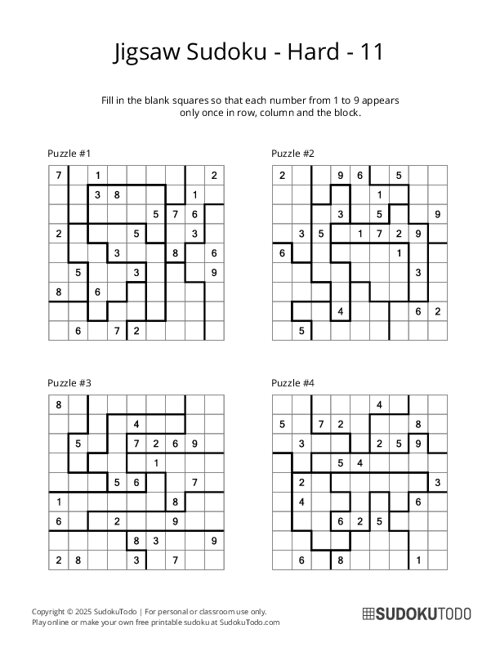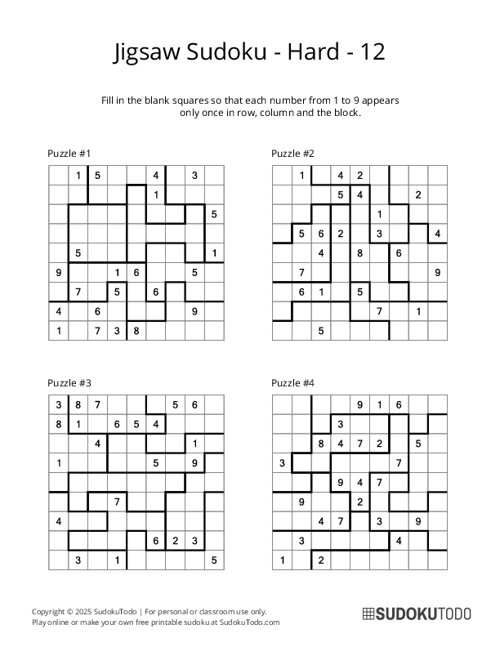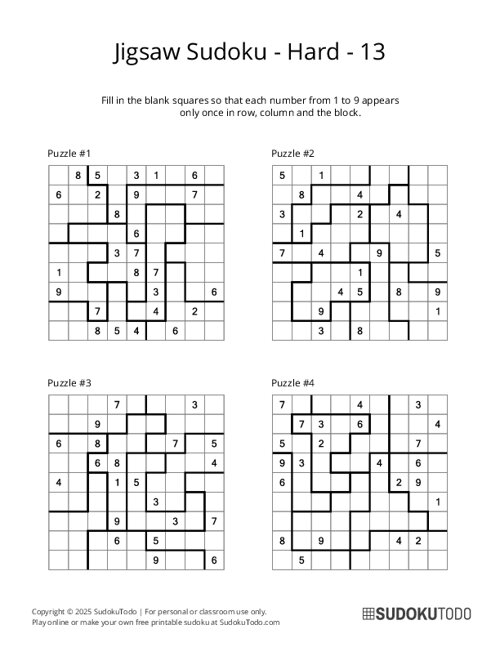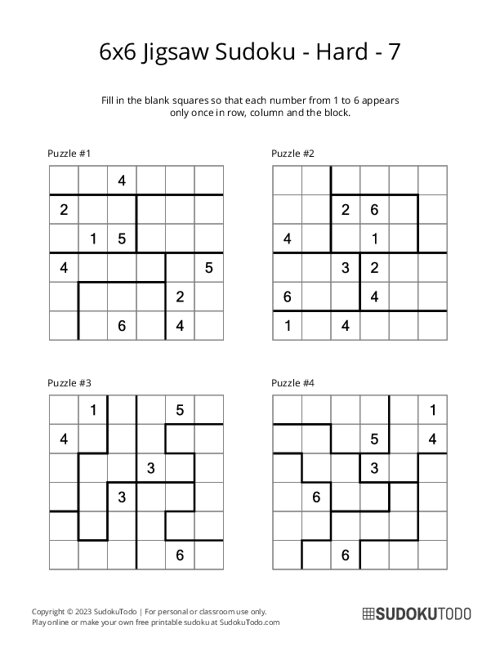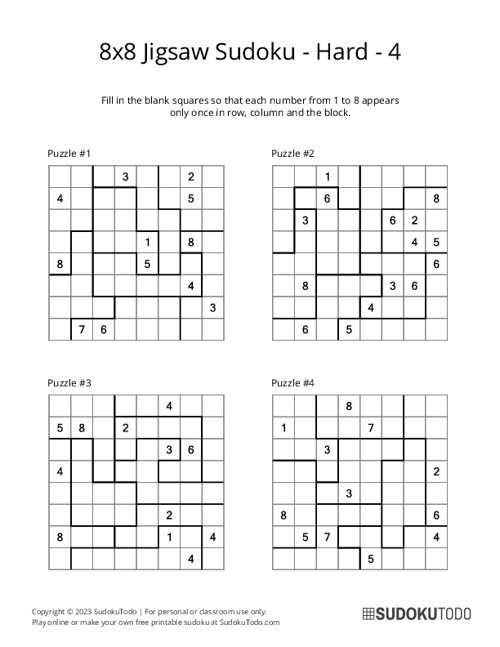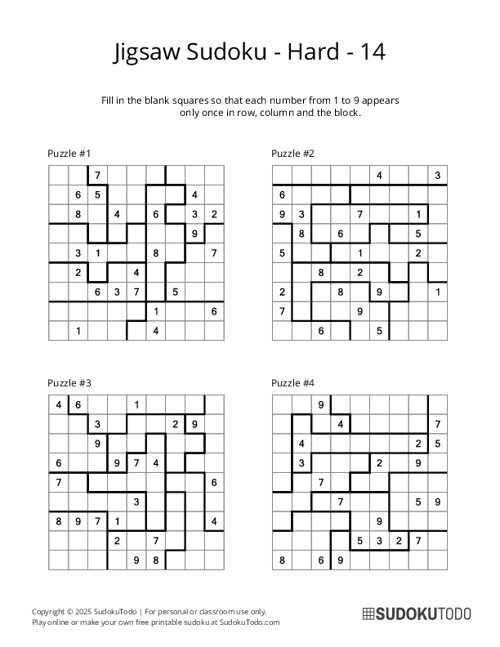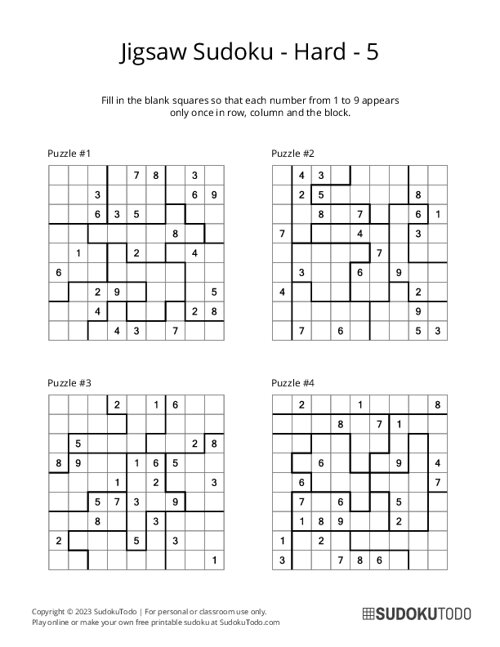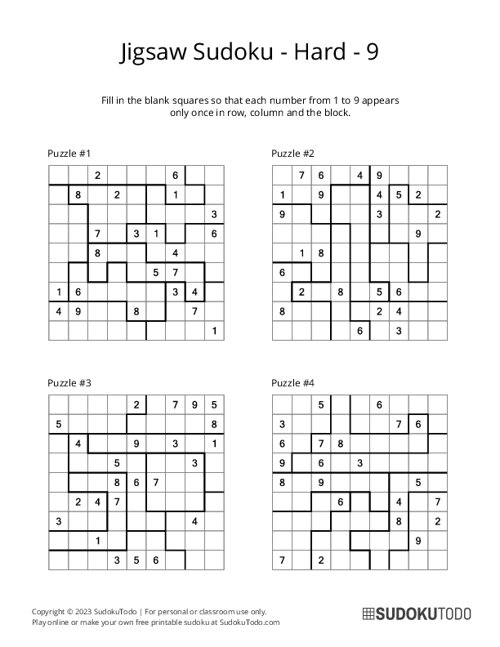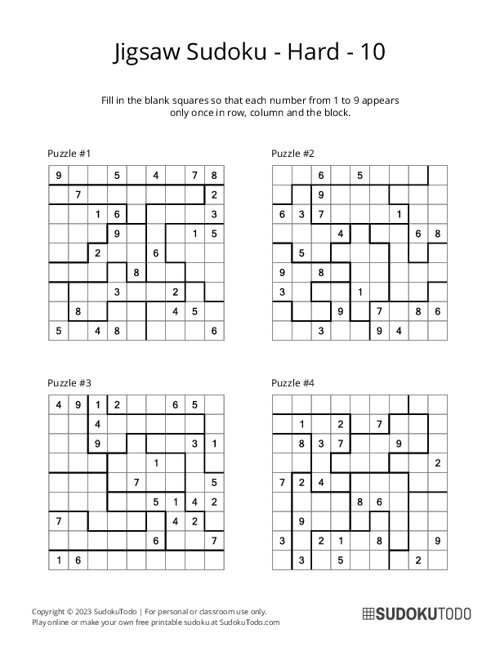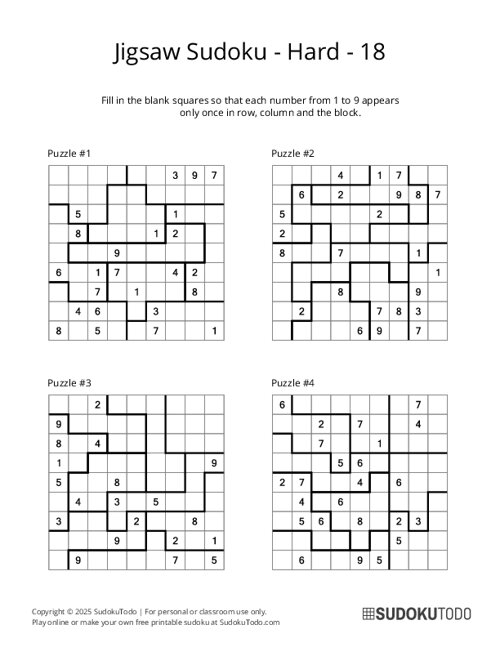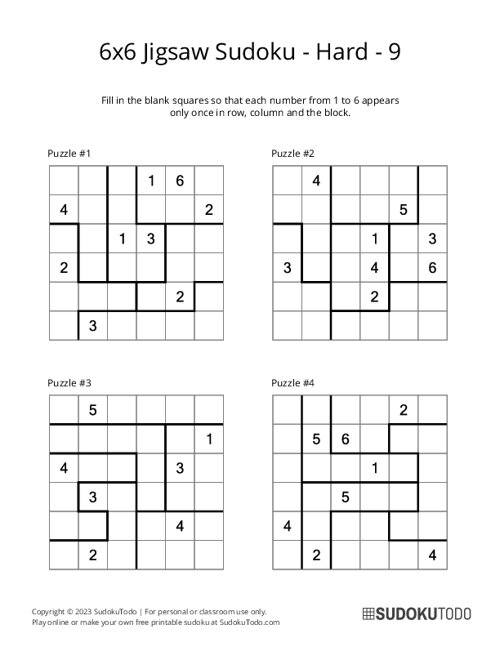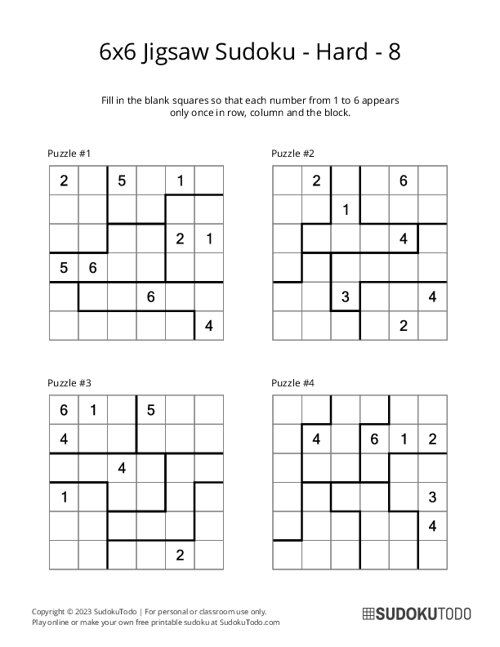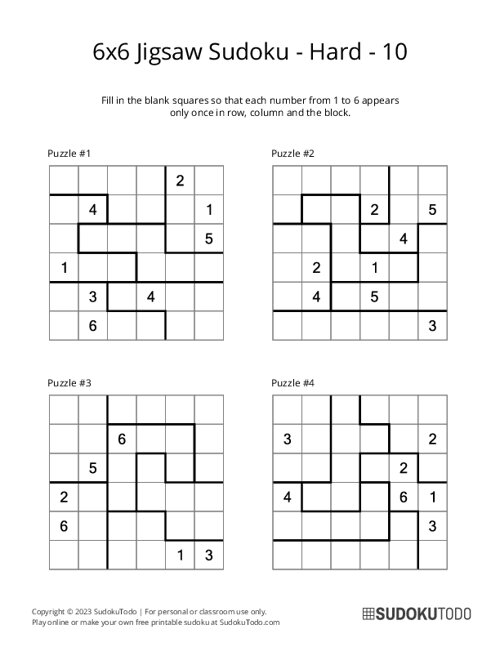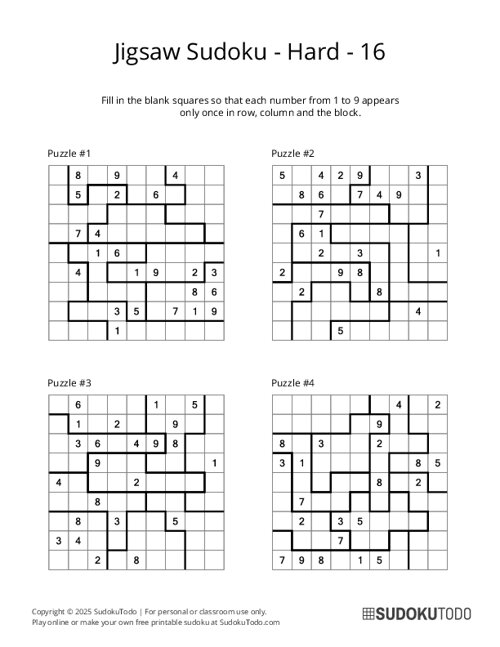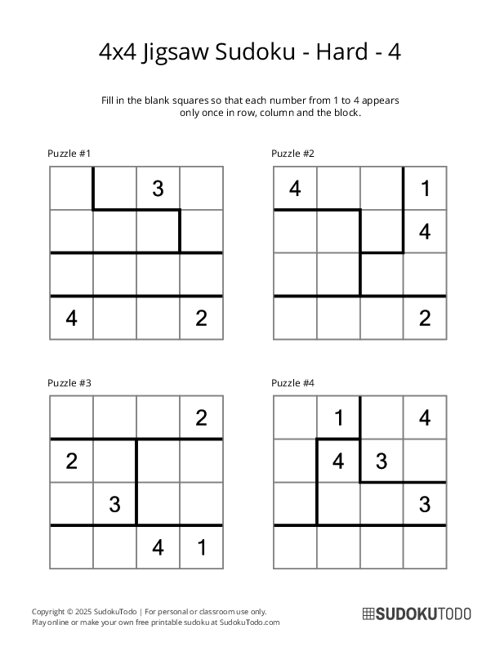Printable Sudoku
- Alphabet
- Battleships
- Binary
- Bridges / Hashi
- Chain Sudoku
- Consecutive
- Cross Sudoku
- Flower Sudoku
- Frame Sudoku
- Futoshiki
- Galaxies
- Greater Than
- Hitori
- Jigsaw Sudoku
- Kakuro
- KenKen
- Killer Sudoku
- Kropki Sudoku
- Little Killer
- Magic Squares
- Nonogram
- Odd Even Sudoku
- Outside Sudoku
- Rossini Sudoku
- Samurai Sudoku
- Sandwich
- Skyscraper
- Slitherlink
- Sohei Sudoku
- Star Battle
- Sudoku
- Sudoku for Kids
- Sudoku Mine
- Sudoku XV
- Sujiken
- Tripledoku
- Tripod Sudoku
- Twodoku
- Vudoku
- Windmill
Special Variations
Generate
Play / Solve
- Home»
- Jigsaw Sudoku»
- Hard
Hard Jigsaw Sudoku Puzzles
Collection of free hard Jigsaw Sudoku Puzzles printable. With unusual block shapes and tricky logic, these printable puzzles will really test your Sudoku skills. Perfect for Sudoku enthusiasts seeking a mental workout. Download and print today.
Showing 1-15 of 60 records
Sort by:
Jigsaw Sudoku - Hard - 11
Jigsaw Sudoku - Hard - 12
Jigsaw Sudoku - Hard - 13
6x6 Jigsaw Sudoku - Hard - 7
8x8 Jigsaw Sudoku - Hard - 4
Jigsaw Sudoku - Hard - 14
Jigsaw Sudoku - Hard - 5
Jigsaw Sudoku - Hard - 9
Jigsaw Sudoku - Hard - 10
Jigsaw Sudoku - Hard - 18
6x6 Jigsaw Sudoku - Hard - 9
6x6 Jigsaw Sudoku - Hard - 8
6x6 Jigsaw Sudoku - Hard - 10
Jigsaw Sudoku - Hard - 16
4x4 Jigsaw Sudoku - Hard - 4
About Jigsaw (Irregular) Sudoku Puzzles
Jigsaw Sudoku, also called Irregular Sudoku, is a different type of Sudoku puzzle. It follows the usual Sudoku rules but has a twist: instead of the regular 3x3 boxes, it uses areas with unusual shapes, like puzzle pieces. These are called "cages" or "jigsaw pieces." These uneven shapes can look different and don't have to be perfect squares.
Rules / How to Play
- Row Rule: Each row must contain all numbers from 1 to 9, without repetition.
- Column Rule: Each column must contain all numbers from 1 to 9, without repetition.
- Irregular Region Rule: Each irregularly shaped region must also contain all numbers from 1 to 9, without repetition.
- Prefilled Numbers: Some cells are pre-filled with numbers. These clues help guide the solver to the unique solution.
- Grid Shape: In Classic Sudoku, the grid is divided into nine uniform 3x3 sub-grids. While, in Jigsaw Sudoku, the "regions" are irregular shapes, making the solving process more dynamic and complex.
Solving Tips and Techniques:
Solving Jigsaw Sudoku requires a combination of classic Sudoku techniques and some additional strategies to account for the irregular shapes.
- Start with the Simplest Regions: Start with the areas that have the fewest clues. This makes it easier to find possible answers.
- Unique Numbers: Find the numbers that are missing in each row, column, or section, and fill them in, making sure no number repeats in any row, column, or section.
- Single Candidate (Naked Singles): If a cell can only have one number because of the rules, write that number in the cell.
- Single Position (Hidden Singles): If a number can only fit in one spot in a row, column, or box, put it in that spot.
- Use Pencil Marks: Use pencil marks to note down possible numbers for each box.
